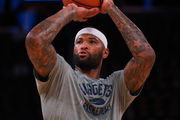

Nike Inc. decided to ‘JUST DO IT!’ The $129.72 billion company’s leadership is changing as John Donahoe steps down, making way for Elliott Hill. The ‘Wind of Change’ is evident as Nike’s stocks sprinted 8% after Donahoe stepped down. Donahoe’s tenure, while marked by a stock dip and loss of market share, did leave a lasting impact on Nike’s digital transformation. Joe Pompliano, in his recent edition Ten Quick Thoughts on Nike’s CEO Change of Huddle Up newsletter, breaks down Donahoe’s mixed legacy.
Watch What’s Trending Now!
While Pompliano emphasizes Donahoe’s shortcomings, such as the loss of market share and stock declines, it’s important to highlight his notable achievements while also addressing the elephant in the room—the $104 million payout.
ADVERTISEMENT
Did ‘The Man Who Made Nike Uncool’ had a Tech-Forward Vision?
John Donahoe, who took the reins in 2020, led Nike through a crucial digital transformation. As traditional retail faced significant disruption, he pushed Nike toward a direct-to-consumer (DTC) model, emphasizing e-commerce and digital platforms. While Pompliano critiques this shift as opening the door to competitors like On and Hoka, the strategy did improve margins and laid the groundwork for Nike’s digital-first future. His focus on cutting out middlemen and driving digital membership through apps like Nike Training Club helped streamline consumer access, expanding Nike’s e-commerce growth even amid the pandemic.
Today’s newsletter includes ten quick thoughts on Nike’s CEO change, including why Elliott Hill is a better fit for Nike than John Donahoe.
READ: https://t.co/FaxgkGs8qU pic.twitter.com/dbVrUGGkVW
— Joe Pompliano (@JoePompliano) September 20, 2024
Donahoe’s vision for Nike also embraced sustainability and innovation, areas where the company sought to retain its leadership in the athletic wear space. Under his guidance, Nike doubled down on sustainable initiatives, such as circular fashion with the “Move to Zero” program, which aimed to reduce carbon emissions and waste.
ADVERTISEMENT
While Pompliano hints that Donahoe’s digital focus wasn’t groundbreaking enough to prevent this leadership shakeup, it’s important to note how Nike has set industry standards for blending technology with performance apparel. The DTC growth was not only impressive in revenue but also in its ability to engage consumers. So while Pompliano may have his doubts, Nike’s digital pivot will likely benefit Elliott Hill moving forward.
Top Stories
Kyrie Irving Breaks Silence After Injury Return Update Emerges

Prayers Pour In For Napheesa Collier After Unfortunate Health Announcement

Is Austin Reaves Dating YouTuber SteveWillDoIt’s Ex-Girlfriend? Fact Checking Viral Claim

Michael Jordan Could Have Repaired Scottie Pippen Relationship if He Wanted To: Former Teammate

Are Nuggets Signing DeMarcus Cousins? Fact Checking the Viral News

However, I do agree with Pompliano’s criticism: the DTC model wasn’t perfect. Pompliano’s assertion that Nike ceded shelf space to “cooler” brands like Hoka and On has merit, especially as Nike’s core market in physical retail suffered. Additionally, Donahoe faced difficulties with maintaining market share in the running category—one of Nike’s original and most profitable sectors—amidst post-pandemic consumer behavior shifts.
ADVERTISEMENT
Additionally, Nike’s stock plummeted, losing 50% from its all-time high. Investor and employee confidence waned, leading to Hill’s return as a cultural revivalist.
Moreover, as Pompliano noted, investor and employee confidence wavered during Donahoe’s tenure, culminating in the decision to bring back Elliott Hill, a Nike veteran who understands the company’s core culture. Hill’s long-standing ties to Nike are expected to re-invigorate company morale and address some of the dissatisfaction that arose under Donahoe.
ADVERTISEMENT
John Donahoe’s $104 Million Payout: Justified or Excessive?
One of the more controversial aspects of John Donahoe’s departure was his $104 million compensation package. Critics argue that such a payout is excessive, particularly given Nike’s stock decline during his tenure. However, this package also reflects Nike’s broader industry practices, where CEOs are rewarded based on long-term incentives.
The $104 million payout may be justified by Donahoe’s role in navigating Nike through a pandemic and shifting it toward a more digitally focused future. This raises questions about the balance between rewarding leadership for transformation versus financial performance.
John Donahoe’s tenure at Nike is a complex chapter, full of both achievements and criticisms. While the $104 million payout draws plenty of attention, it shouldn’t overshadow his role in helping Nike successfully navigate a turbulent market and a rapidly changing digital environment. As Elliott Hill steps into the CEO role, only time will tell whether Nike’s next chapter builds on Donahoe’s foundation or charts a new course entirely.
ADVERTISEMENT
The Future Under Elliott Hill: A Cultural Reset?
Joe Pompliano’s take on Nike “needing to reduce emphasis on limited-edition sneakers”, while excluding the Jordan Brand, presents a solid take. The Jordan Brand’s remarkable growth to $7 billion in annual sales underscores its unique cultural status and market potential. However, the reliance on limited-edition sneakers elsewhere creates barriers for consumers, driving prices up on the secondary market due to bots and scarcity.
Nike’s obsession with scarcity-driven models has made it harder for average consumers to access their products, contributing to PR issues. Hill’s challenge will be striking a balance between exclusivity and accessibility. A more balanced strategy could involve increasing the availability of popular models at competitive prices, making Nike’s products more accessible, and addressing PR issues around exclusivity. By focusing on the Jordan Brand’s success without overemphasizing limited editions across the board, Nike could maintain cultural relevance while making strides in customer satisfaction.
ADVERTISEMENT

ADVERTISEMENT
The big question remains: Can Elliott Hill build on Donahoe’s digital foundation; will Nike return to its roots or will he steer Nike in a completely new direction? Hill’s extensive tenure, beginning as an intern, places him in a prime position to lead Nike through a cultural revival. Meanwhile, analysts expect this shift to be part of a multi-year turnaround. Whether this leadership shift proves to be more than just a course correction is what investors—and fans—will be closely watching.
Elliott Hill’s ascension to CEO has created a buzz about Nike’s future direction. With deep roots in Nike’s marketing and product innovation, Hill is expected to bring a fresh but familiar energy to the company.
For the sports industry experts, the question becomes: Is this leadership shift just business as usual, or is Nike trying to appease investors after Donahoe’s digital-heavy strategy? This transition is less about Donahoe’s perceived shortcomings and more about positioning Nike to maintain its dominance in a hyper-competitive landscape.
ADVERTISEMENT
Count on me for more bold perspectives on the sports industry. In the meantime, catch our newest Think Tank feature, Elevating NBA & NFL Legends Through Brand Building with Doug Sanders below. Trust me, you won’t want to miss it!
ADVERTISEMENT
ADVERTISEMENT
ADVERTISEMENT

